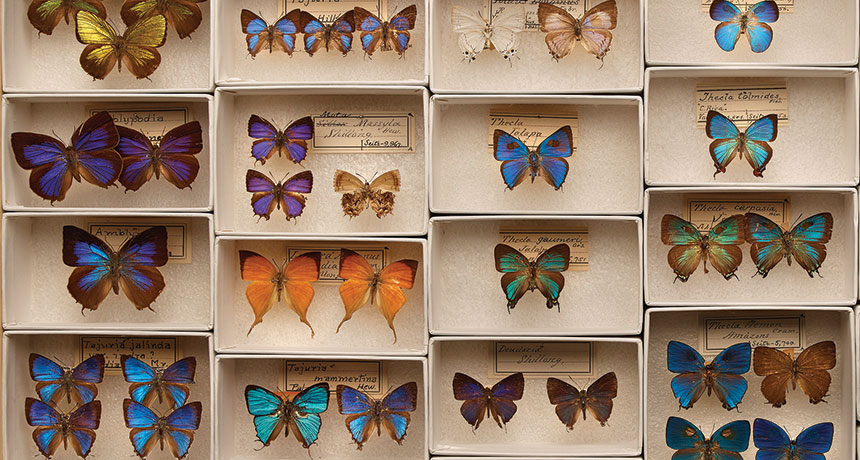‘Specimens’ goes behind the scenes of Chicago’s Field Museum

Most visitors to a large natural history museum don’t know it, but they are only scratching the surface of the museum’s holdings, even if they check out every exhibition. Most of the scientific treasures are tucked away in collection rooms filled with millions of specimens, which scientists use in their research.
The Field Museum in Chicago, home to Sue, the famous T. rex, is displaying some of its secreted goodies in its new exhibit “Specimens: Unlocking the Secrets of Life.” The museum has more than 30 million biological specimens, mummies, minerals, cultural artifacts and other objects in its collections. At any one time, only 0.5 to 1.5 percent of the holdings are on display. For the new exhibit, curators brought out about 5,600 additional items — from preserved deep-sea creatures and fossilized brains to meteorites — to show the diversity of the museum’s hidden collections, says Rusty Russell, director of collections.
“Specimens” not only provides access to these items, but it also informs the public about what natural historians do for a living. “Field Museum’s scientists do collections-based research. Without our vast collections, we could not carry out our science,” says William Simpson, head of geological collections and collections manager of fossil vertebrates. “In fact, almost none of our collecting is done for exhibit.”
Visitors wandering the exhibit will notice that all of this collecting has helped shed light on life millions of years ago, as well as stories ripped from today’s headlines.
Remember the Miracle on the Hudson in 2009? Pilot Chesley B. “Sully” Sullenberger safely landed a plane after its engines failed in a bird strike. To identify the birds, a scientist compared the remains recovered from the plane’s engines with tissues from known birds in the museum’s collection, some of which are on display in “Specimens.” The researcher determined that the birds were migratory Canada geese, not year-round Big Apple residents.
Museum collections play central roles in all kinds of identifications, especially for classifying new species. The museum has more than 20,000 holotypes — specimens that researchers have used to define species — in its collections, most of which were identified by museum scientists. The new exhibit features about 10 of these.
One example: dinosaur bones discovered in 1900 in the Colorado Rockies. In his lab, Elmer Riggs, the Field Museum’s first paleontology curator, removed rock covering the bones and realized he had unearthed a dinosaur bigger than Brontosaurus, the largest dinosaur known at the time. Riggs named the new dinosaur Brachiosaurus altithorax.
Another holotype on display is a skull and jaw of the early mammal Morganucodon oehleri, named in 1963, from the early Jurassic Period some 200 million years ago. The fossils show evidence of key evolutionary changes in early mammal history.
Several parts of “Specimens” are more hands-on. Visitors are urged to touch a giant, 160-kilogram clamshell from the Philippines, and they can peruse a drawer full of now-extinct butterflies with silvery-blue wings. Visitors also can sort seashells into different species. An interactive touch screen offers a look at ancient insects trapped in amber a la Jurassic Park.
When specimens are collected, researchers often don’t know how they’ll be used in the future. In one recent case, researchers analyzed two Arctic ivory gulls collected in 1896 to show that mercury levels in the ocean are now 45 times higher than a century ago. In another example in the exhibit, rodent and marsupial bones found in owl pellets recovered from Australian caves document wildlife before European settlement. Managers are now using the fossils as a blueprint to re-create ecosystems with species that still live in Australia.
All of these specimens show Field visitors a world they may not have known existed behind museum walls. Other large museums would do well to highlight their hidden bounty, too.